Visiting Cidade velha on Santiago Island is travelling to the heart of a deep and complex history, marked by the arrival of the first European settlers in West Africa. As a UNESCO World Heritage Site, this ancient city is a veritable open-air museum, where every corner and stone tells the secrets of centuries gone by.
Known as the cradle of Cape Verdean culture, this small town, about 20 minutes from the capital Praia, was the first to be founded by Europeans in the tropics and played a central role in the period of maritime discoveries. Today, it is one of the most emblematic places in the archipelago, where culture, history and tradition intertwine.
In this article, you'll get to know Cidade Velha better through an itinerary that includes the main places to visit, perfect for discovering Cape Verde's history at your own pace.
Africa's first colonial city
Founded in the 15th century by the Portuguese, Ribeira Grande, as it was called at the time, was established as one of the first footholds in the
Atlantic for the expansion of trade routes. The site was chosen for its strategic location, which facilitated trade between Europe, Africa and, later, the American continent.
It quickly became a centre for trading slaves and other goods. In addition to trade, the city was an important place for repairing ships, which contributed to its evolution, but also attracted pirate attacks.
Now that you know a little more about Cidade Velha, get ready to delve deeper into its history by visiting its main points of interest.
The itinerary can last all day or just a morning or afternoon, depending on what you want to do. If you want to linger at the monuments, interact with the people and enjoy the scenery, you could set aside a whole day. But if your schedule is tight, half a day is enough.
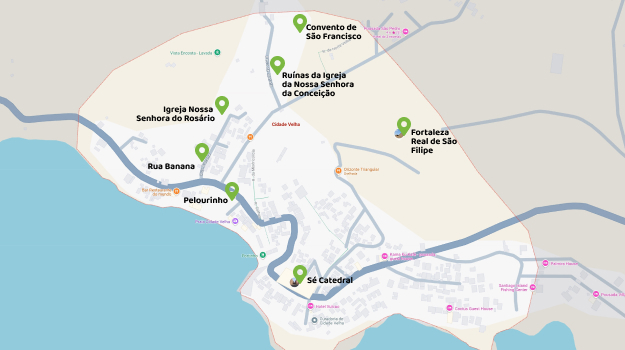 Map of Cidade Velha
Map of Cidade Velha
Banana Street: the first paved street in the tropics
This is Cape Verde's most famous street because it was the first to be paved in the tropics, on 31 January 1533. With its stone houses and thatched roofs, Banana Street is a throwback to the past.
The buildings on this street have been restored to preserve their original architecture, creating an authentic and picturesque atmosphere. Every detail on the façades, doors and windows tells stories of the first settlers and the European influences brought to the archipelago.
The scenery becomes even more captivating with children playing and women catching fish in front of their houses.
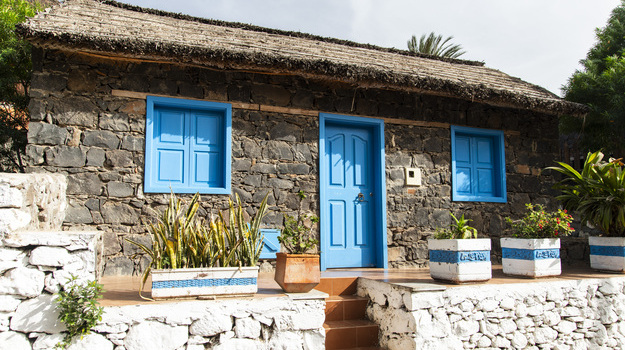 Banana Street
Banana Street
Cidade Velha and the faith imposed by the colonisers
In Cidade Velha, the settlers' faith, materialised in churches and convents, is still present, even if it's mainly through ruins.
Nossa Senhora do Rosário Church
The only building that remains well preserved is the Nossa Senhora do Rosário Church, the first colonial church built in sub-Saharan Africa in 1496, where slaves were baptised.
This Gothic building was enlarged from a Manueline-style chapel, has survived the centuries and remains a landmark of the religious past.
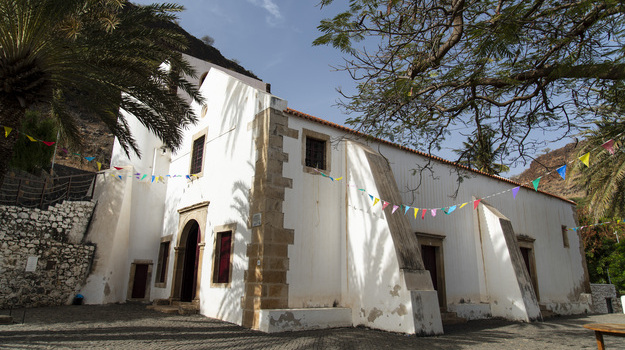 Nossa Senhora do Rosário Church
Nossa Senhora do Rosário Church
São Francisco Convent
Another important centre of evangelisation, which strengthened the Church's presence in the new lands, was the São Francisco Convent (1640). In addition to its religious function, the convent was also a spiritual refuge for the settlers and a symbol of the spread of Christianity in Cabo Verde.
Today, what remains of the convent are ruins that still retain traces of monastic life.
Nossa Senhora da Conceição Church and Cathedral of Ribeira de Santiago
Also in ruins is the Church of Nossa Senhora da Conceição, one of the oldest in Cabo Verde (1466-1470) and the Cathedral of Ribeira de Santiago, the largest religious building on the island.
What remains of the cathedral, built around 1556, continues to impress visitors with its scale and religious importance in Cape Verde's history.
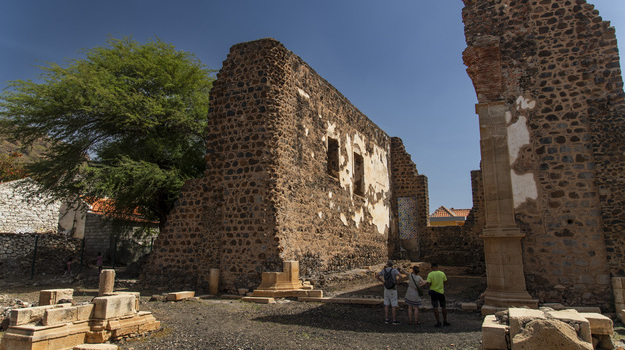 Ruins of the Cathedral of Ribeira de Santiago
Ruins of the Cathedral of Ribeira de Santiago
Pillory of Cidade Velha: remembering not repeating
The Pillory of Cidade Velha, in the centre of the main square, recalls dark times when slaves were publicly punished. Once a symbol of justice, today it is a reminder of the oppression of the colonial era.
The Pillory is preserved as a place of memory, a symbol of the struggle for freedom and human dignity.
Here you can stop by the terraces and watch the movement of tourists and street vendors with their handicrafts.
In almost every restaurant, grilled fish does the honours, were it not for the sea so close by. But there are also meat dishes and, of course, the famous cachupa.
 Pillory
Pillory
Royal Fort of São Felipe: the guardian of Cidade Velha
From the top of Achada Forte, the Royal Fort of São Felipe, built in 1587, offers an impressive panoramic view over Cidade Velha and the Atlantic Ocean. The cannons pointing out to sea are a reminder of the days when the city had to be defended against frequent attacks by pirates and privateers.
In addition to the cannons, the fort preserves other historical elements such as the defence weapons and the prisoners' cells.
A suggestion is to watch the sunset from the fort, a true marvel that impresses with its scenery.
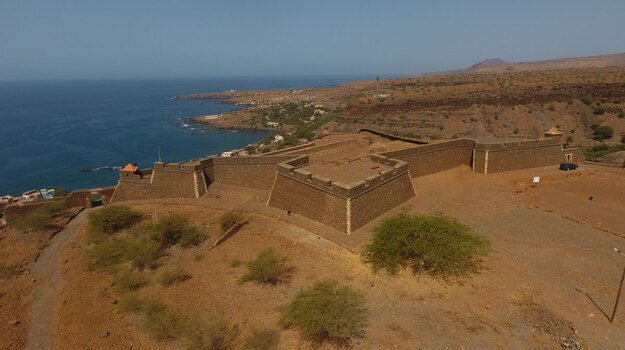 Royal Fort of São Felipe
Royal Fort of São Felipe
Source - Photo Cultural Heritage Institute
Cidade Velha awaits you
If you can spend the day in Cidade Velha, take the opportunity to see its beaches and harbour, after all, this was the entrance to the Atlantic world in Cabo Verde for many years.
Also take the opportunity to go to the restaurants by the sea and try authentic Cape Verdean cuisine, where you can savour dishes rich in tradition and flavour. Corn fried pastry and cachupa are some of the delicacies that tell the story of these people.
Visiting Cidade Velha is an open-air history lesson. Plan your trip, Cidade Velha and Santiago Island are waiting for you.





